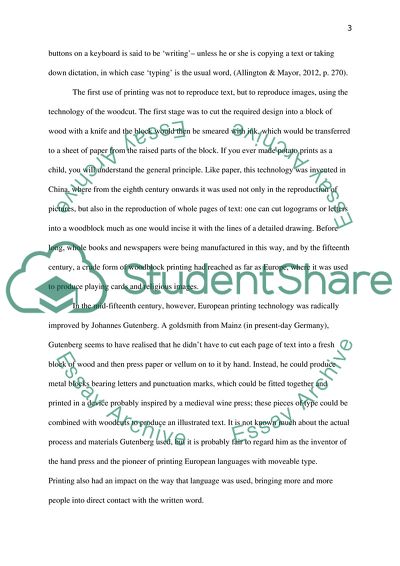Cite this document
(Technology in Shaping the Use of English Research Paper, n.d.)
Technology in Shaping the Use of English Research Paper. https://studentshare.org/english/1806899-with-examplesdiscuss-the-role-that-two-specific-technologies-have-played-in-shaping-the-way-that-english-is-usedyou-may-use-examples-from-within-andor-beyond-the-british-isle-approx1850-words
Technology in Shaping the Use of English Research Paper. https://studentshare.org/english/1806899-with-examplesdiscuss-the-role-that-two-specific-technologies-have-played-in-shaping-the-way-that-english-is-usedyou-may-use-examples-from-within-andor-beyond-the-british-isle-approx1850-words
(Technology in Shaping the Use of English Research Paper)
Technology in Shaping the Use of English Research Paper. https://studentshare.org/english/1806899-with-examplesdiscuss-the-role-that-two-specific-technologies-have-played-in-shaping-the-way-that-english-is-usedyou-may-use-examples-from-within-andor-beyond-the-british-isle-approx1850-words.
Technology in Shaping the Use of English Research Paper. https://studentshare.org/english/1806899-with-examplesdiscuss-the-role-that-two-specific-technologies-have-played-in-shaping-the-way-that-english-is-usedyou-may-use-examples-from-within-andor-beyond-the-british-isle-approx1850-words.
“Technology in Shaping the Use of English Research Paper”. https://studentshare.org/english/1806899-with-examplesdiscuss-the-role-that-two-specific-technologies-have-played-in-shaping-the-way-that-english-is-usedyou-may-use-examples-from-within-andor-beyond-the-british-isle-approx1850-words.


